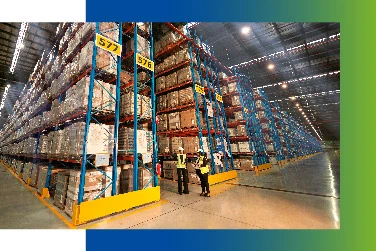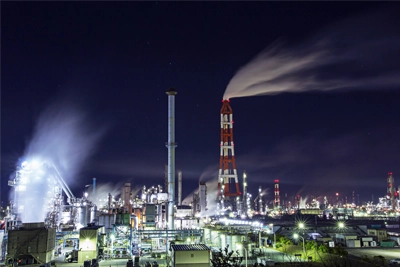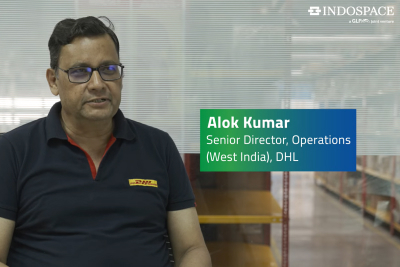As warehousing is a dynamic business, meaning it requires consistent monitoring to ensure that all processes are aligned to business goals. Enterprises assign a range of key performance indicators (KPIs) while setting unique goals for each function within the operational value chain.
Additionally, enterprises growing into a new logistics space for lease may have to tailor their existing KPIs to better align operational goals set for the new space. Similarly, FG and RM warehouses will have different goals and KPI expectations to better track the productivity of each model adopted.
Key Enterprise-level KPIs
Enterprises can focus on optimizing their warehouse operations by monitoring processes based on top-level KPIs. Major attributes may be tracked along with their subsequent metrics to assess performance holistically.
Supply chain performance
The on-time delivery performance (OTD) is a critical KPI that needs to be tracked in order to ensure that all processes are aligned with customer expectations. The percentage figure captures successful deliveries within the requested delivery date/time (RDD) as a part of the total deliveries made during a measured period.
Fill rate is another important metric that helps track why orders may or may not be delivered in the first dispatch. It can help uncover on-ground challenges that require immediate intervention. Order fulfilment lead time and perfect order fulfilment are also key indicators for the success of warehouse operations.
Enterprise-level metrics such as OTD, fill rate and lead times allow warehouses to measure their process agility and operational effectiveness. Managers can track the speed, accuracy, and precision of their logistics chains by leveraging these metrics while enhancing operations to remain customer-oriented.
Supply chain operational costs
The total supply chain management cost is a critical metric to track in order to better manage expenses and maintain profitability. The core objective of tracking these KPIs is to reduce the cost of operations, while capturing opportunity costs for new developments.
Firms can also track the carrying cost of inventory which is the total cost of holding inventory for specific periods. Rent, utilities, electricity, labour, and technology resources are invested to ensure that all inventory is optimally managed, especially when running large-scale warehousing operations. That is why it is important to manage these costs as enterprises expand into new domains, geographies, and industries.
Management efficiency
Organizations can track the cash to cash cycle time and supply chain cycle time to measure the effectiveness of their current logistics systems. The faster the time to delivery and payment, the more efficient the management system is.
Key business metrics such as profitability, turnover ratio, workforce utilization, fulfilment, etc. are important to track monthly. Firms need to also understand the effectiveness of their management protocols by analysing key KPIs such as receiving, inventory days of supply, asset turn, inventory turnover, cost of inventory and reverse logistics costs.
By mapping these enterprise-level management KPIs, companies can enhance operational efficiencies while finding root causes behind logistical issues. Gaps within the greater warehousing processes can be uncovered and recourse strategies can be initiated while reviewing improvement through these management KPIs.
Custom KPIs for warehouses
Enterprises can also design custom KPIs for their warehouses depending on their scale, and industry-focus. Inventory accuracy, put-away, labour efficiencies (cost per line item, picking/packaging, etc.) and perfect order rates can be tracked to enhance logistical efficiencies over time.
Firms may also focus on health and safety related KPIs that managers may need to track, such as accident rates, health & safety costs, percentage of products impacted etc. These may be critical to monitor regularly in order to optimize labour efficiencies, and to comply with industry regulatory standards.
Companies may also measure KPIs based on the sustainability and eco-friendliness of their operations. Key parameters such as emissions (CO2 tonnes/month), energy use, recyclability of materials, etc. can be monitored regularly to remain compliant to industry regulations. Moreover, firms are looking at environmental KPIs such as carbon footprint, emissions to air, dust & particles rate etc. to ensure that their operations are sustainable long-term.







